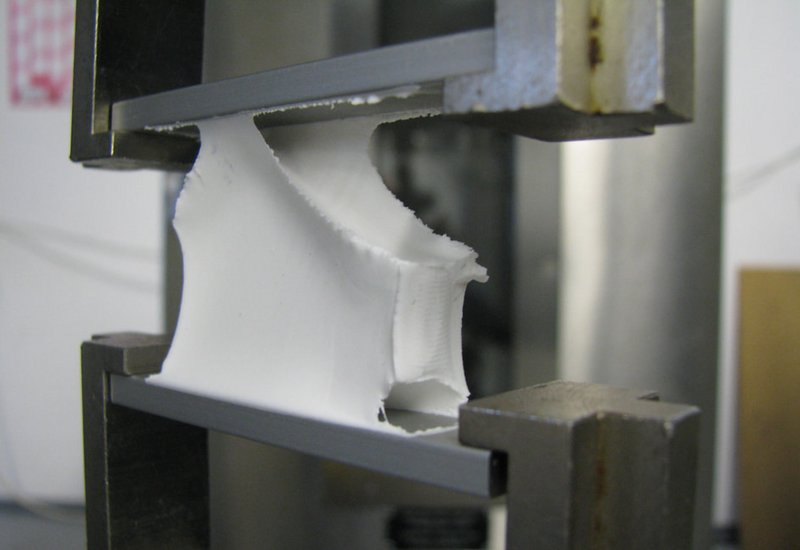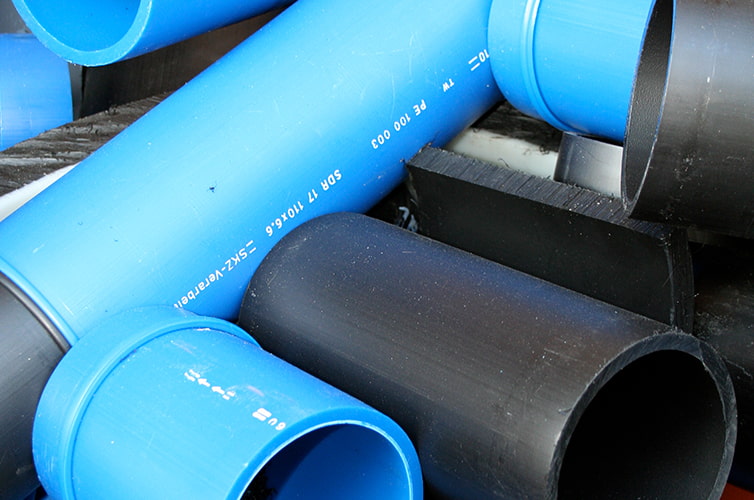Search standard for testing available at SKZ
Search standard for testing available at SKZ
Testing of sealants
Modern sealants are indispensable for non-structural joints in buildings and pedestrian walkways as well as for sealing in systems with water-polluting liquids. Their versatile use also extends to the sealing of sewage pipes. These innovative sealing materials not only ensure protection against moisture, but also offer long-lasting safety in buildings and facilities. Thanks to continuous development, sealants are now essential building blocks for sustainable and effective construction and plant engineering.
Joint sealants for non-load-bearing applications
in buildings and pedestrian walkways
We test joint sealants for you for the following areas of application:
- Facade elements (EN 15651-1)
- Glazing (EN 15651-2)
- Sanitary facilities (EN 15651-3)
- Pedestrian walkways (EN 15651-4)
- Sealing exterior wall joints in building construction with joint sealant (DIN 18540)
- Building construction - Joint sealants - Classification and requirements of sealants (EN ISO 11600)
The materials we test for sealants can be silicone-, acrylate-, polyurethane- or hybrid-based. Other materials can be requested from us. If you need support with the development of new products or process optimization, we can also help you as part of our research projects.
Joint sealants for sealing in systems for handling water-polluting liquids and for sealing sewage pipes
Joint sealants such as 1C and 2C polyurethane as well as polysulphide sealants are crucial for sealing in systems with water-polluting liquids and wastewater pipes. The applications of these materials range from industrial plants to municipal sewage systems.
As a notified body, we are also happy to support you with approval tests for the DIBt.
Among others, we offer the following tests on sealants
Requirements according to EN 15651-1 for CE marking
- Fire behavior according to EN 13501-1
- Stability according to EN ISO 7390
- Volume loss according to EN ISO 10563
- Adhesion/expansion behavior after immersion in water according to EN ISO 10590
- Durability according to EN 15651-1 Chapter 5
Requirements according to EN 15651-1 for classification (class 25LM)
- Resilience according to EN ISO 7389
- Stability according to EN ISO 7390
- Tensile properties (secant modulus) according to EN ISO 8339
- Tensile behavior under preload according to EN ISO 8340
- Adhesion/elongation behavior at different temperatures according to EN ISO 9047
- Adhesion/elongation behavior after immersion in water according to EN ISO 10590
- Volume loss according to EN ISO 10563
Requirements according to DIN 18540
- Fire behavior according to EN 15651-1 (substrate: mortar M1)
- Early resistance / adhesion and expansion test when exposed to Ca(OH)2-saturated water in accordance with DIN 52455-1 (exposure C)
- Discoloration of adjacent building materials according to DIN ISO 16938-2 (performed with test specimens made of white cement)
- Discoloration of natural stone according to DIN ISO 16938-2 (carried out with test specimens also made of natural stone)
- Compatibility with coating systems according to DIN 52452-4






